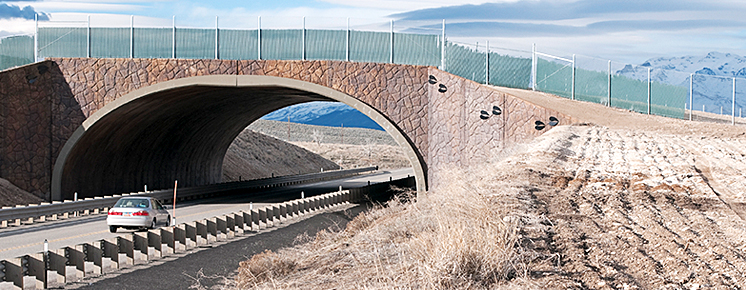
Service Limit State Design for Bridges.
Service Limit State Design for Bridges (R19B)
Challenge
Bridge components deteriorate at different rates, which can lead to unanticipated bridge closings. Under the current system, bridge components are planned based on "ultimate limit state performance," which does not take into account service limit states focused on longevity-driven and durable design.
Solution
SHRP2's Service Limit State Design for Bridges toolkit offers a quantitative framework to assess service limit states more accurately. The toolkit provides actual performance data, component-based distress models, and specific guidance for common bridge elements, as well as:
- A framework for calibrating service limit state specifications.
- Service limit state load and resistance factors.
- Bridge design procedures and model specifications for service limit states.
- Tools required for future service limit state improvements.
- Model specification changes that include designing for durability.
The toolkit contains databases, software tools used in the calibration (such as Monte Carlo spreadsheets), and instructions for developing new or revised spreadsheets and deterioration models.
The framework will calibrate the following AASHTO service limit state design elements:
- Live load deflections
- Bearing movements
- Settlement of foundations and retaining structures
- Permanent deformations of compact steel components
- Fatigue of structural steel and the steel reinforcement in concrete (complementary research being conducted through the National Cooperative Highway Research Program [NCHRP] 12-83)
- Slip-critical bolted connections
- Concrete approaches
Benefits
Improved service limit state design can increase the service life of bridge components and give designers the option to select bridge components based on expected maintenance time and difficulty of replacement.
-

Save Lives
Knowledge of service limit states, such as cracks, corrosion, and deformation can prevent structural collapses. Additionally, fewer maintenance repairs and road closures can reduce the safety risks for workers and road users.
-

Save Money
By extending the service life of bridges, the frequency of rehabilitating and replacing costly elements of the transportation system is significantly reduced.
-

Save Time
The enhanced designs reduce the regularity of construction work associated with bridge preservation, rehabilitation and reconstruction, and lead to longer and more predictable bridge service life.


